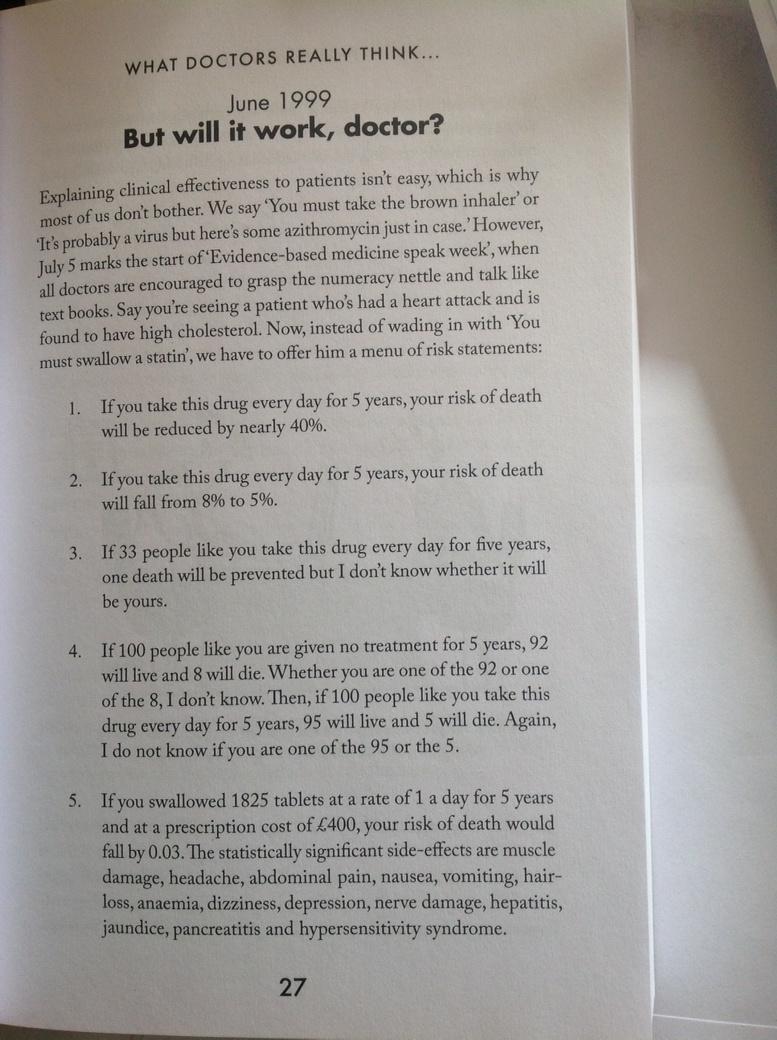Yes, and to be fair, I’m being a little niggly for the sake of it: I assume that the risk it refers to is risk of death in the 5 years of taking the treatment in each case. But that is, of course, an assumption nonetheless.
The last option in the list alludes to the reason why I think phrases such as “risk of death” and “save a life” are quite problematic: Such vocabulary is very emotive, but it masks the fact that the quality of the life years that are preserved may be reduced in a less tangible and less measurable way. It’s quite relevant to cycling where, for instance, people tend to point to deaths or traumatic experiences and use them as justification for measures that would have other harmful effects: ie the dangerisation of something that carries a small risk of traumatic injury but a much broader health benefit. It’s this emotive nature of trauma that often makes conversations about the safety of active transport quite difficult.

